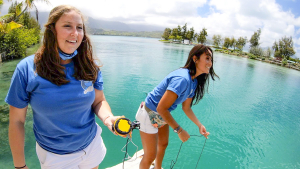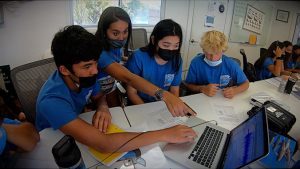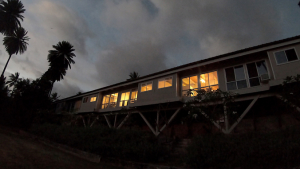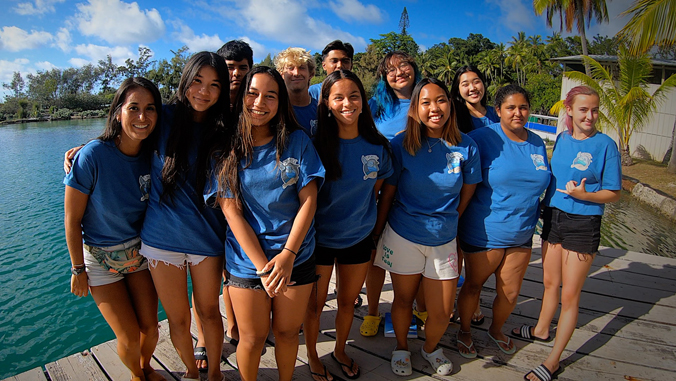Oʻahu high school students spent the week on Moku o Loʻe (Coconut Island) learning about marine mammals science at a University of Hawaiʻi at Mānoa summer program. Developed by two Hawaiʻi Institute of Marine Biology graduate students, the Summer Marine Mammal Intensive Learning Experience (SMMILE) program, a fully funded overnight learning experience, ran from June 12–18.
Eleven incoming high school juniors and seniors from across Oʻahu participated in the SMMILE program, which was developed by UH Mānoa Marine Biology Graduate Program PhD students Kirby Parnell and Brijonnay Madrigal.
“As an underrepresented minority student myself, I know the importance of introducing students to marine mammal science and marine science at an early age to inspire them to potentially pursue the field in the future,” said Madrigal.


SMMILE provides an opportunity for underrepresented high school students to learn about marine mammal science, marine protected areas and conservation. Preference was given to Native Hawaiian and Pacific Islander high school students because their representation in STEM is among the lowest percentages of any minority group and the field of marine mammalogy reflects this deficit.
“This is an important opportunity because it will open up their [students’] minds to new career paths that they never would’ve thought of,” said Pohakumakamae Kahuanui, a Kapolei High School student who is going into 12th grade. “I, for example, never wanted to go to college but now going to this program, I’m thinking about going to college.”
Facilitating hands-on learning
Participants stayed overnight on Moku o Loʻe in the dormitories for the duration of the program.
High school students had hands-on learning opportunities through guest lectures, training, field trips and workshops throughout the week. Topics covered during the program included: acoustics/hearing, unmanned aerial vehicles, tagging, population studies, photo ID, stranding/response and conservation/management.

“Bri, the other co-instructor and I, we are really interested in outreach and education,” said Parnell. “We had opportunities when we were younger to do fun camps like this to learn about marine science, and we really hope to just involve local students to learn more about marine mammals here in Hawaiʻi.”
Upon completing the SMMILE program high school students gain basic knowledge of marine mammals, with a focus on Hawaiʻi’s marine mammals; applicable skills for studying marine mammals in the field and in human-care facilities; opportunities to network with undergraduate and graduate students, experts and organizations that participate in science-based conservation; and to learn to appreciate the diversity of Hawaiʻi’s marine mammals.
SMMILE is funded by a Marine Mammal Commission grant and a UH Mānoa Student Equity Excellence and Diversity (SEED) Inclusion, Diversity, Access and Success (IDEAS) grant. The program was free for 11 high school students.
Oʻahu high schools that have students participating in SMMILE include: Kapolei High School, Waipahu High School, Kamehameha Schools Kapālama, Roosevelt High School, Punahou School, Saint Louis School, Kaiser High School, Kalāheo High School, Castle High School and Asia Pacific International School, Hawaiʻi Campus.


